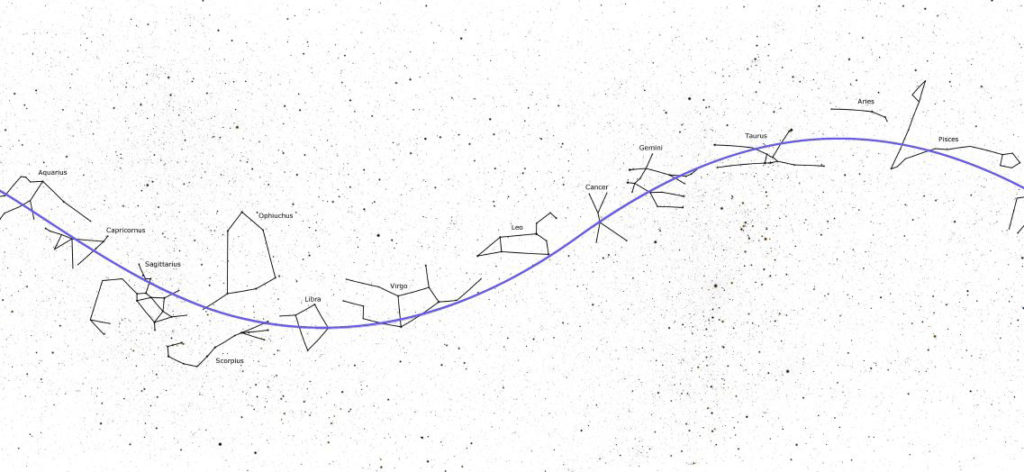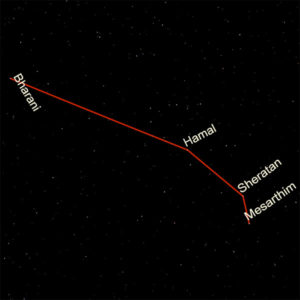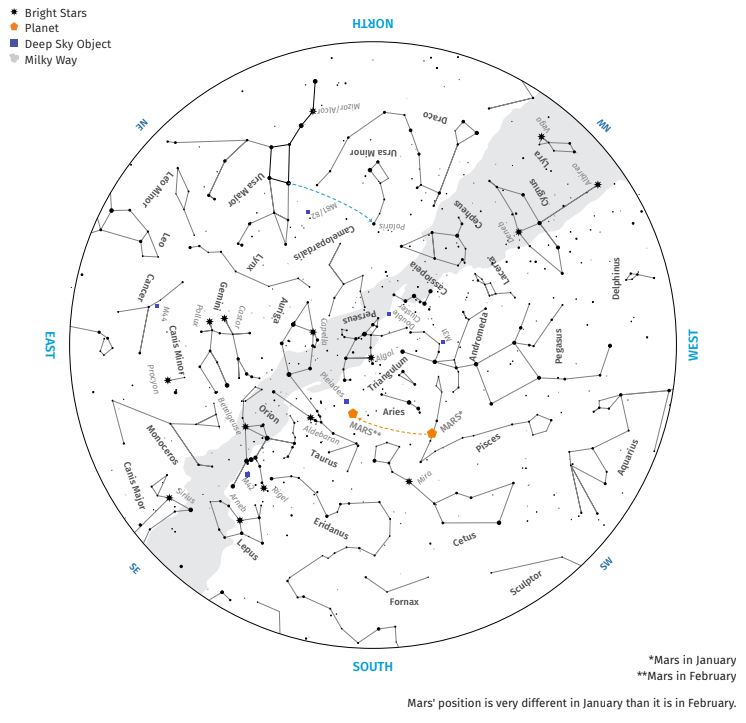
Minnesota Skies: January 2021
Your local guide to observing celestial objects and events
Published12/21/2020 , by Sarah Komperud and Thaddeus LaCoursiere
When you hear the name Aries, you might think of Ares—the Greek god of war with a similar sounding name (aka Mars)—or the horoscope sign associated with the birth dates March 20–April 19. In astronomy, Aries the ram is one of the 13 constellations of the zodiac, and is found along the ecliptic, the Sun’s annual path across the sky. While the nonscientific horoscope dates might lead you to go searching for this constellation in the sky during the spring, this constellation is only visible at night in the fall and winter months.

The 13 constellations of the zodiac
To find Aries in the winter sky, you can starhop by tracing an imaginary line from the North Star through Segin at the end of Cassiopeia to the star Bharani at the eastern end of Aries. From Bharani, look westward in a low arch to find Hamal, the “head of the ram” and the brightest star in Aries; Sheratan; and Mesarthim. Aries is often depicted looking over its shoulder back towards the Pleiades as if it’s admiring them.

Constellation of Aries

Constellation of Aries with ram image
This winter we also have Mars to help guide us to Aries. Mars will start the year off in Pisces, then over the course of a few weeks it will travel just below Aries into the constellation of Taurus by the end of February.

Star map for January
Aries is one of the constellations on our Constellation Hunter sketching list. It’s a project that teaches us how to find the constellations, and then uses sketching to help build our observation skills. You can find out more information about this project on our website including video tutorials for the constellations. And to learn more about how sketching can help improve your observation skills, Jerry Jones from the Minnesota Astronomical Society helps us find the cosmic smiley face in the constellation of Auriga.

